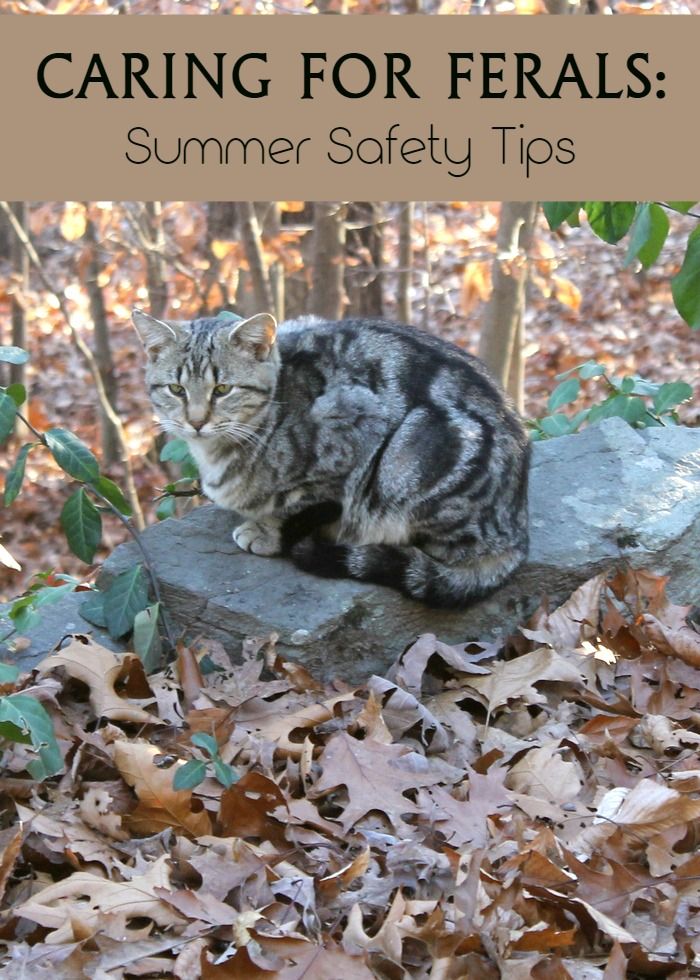Views: 10
Summer can be a challenging time for feral cats, as they face the risks of dehydration, heatstroke and other heat-related issues. As a marketing manager, I understand the importance of providing accurate and relevant information to the target audience. This comprehensive guide will help you learn how to care for wildl cats during the hot summer months, ensuring their safety and well-being.
1: Understanding the Challenges Feral Cats Face in the Summer
Before diving into the ways to care for feral kittens in the summer, it’s essential to understand the challenges they face during this season.
1.1: Dehydration and Heatstroke
Feral kittens, like all animals, need to stay hydrated to maintain their health. In the summer, the risk of dehydration increases due to higher temperatures and limited access to water sources. Dehydration can lead to heatstroke, a life-threatening condition that requires immediate attention.
1.2: Hot Surfaces and Burns
During the summer, surfaces like asphalt, concrete, and metal can become scorching hot, posing a risk of burns to feral cats’ paws. Cats may also seek shelter in or under cars, putting them at risk of injury from hot engines or moving vehicles.
1.3: Increased Parasite Activity
Warmer temperatures can lead to an increase in parasite activity, such as fleas, ticks, and mosquitoes. These parasites can transmit diseases and cause discomfort for feral cats.
2: Providing Essential Care for Feral Cats in the Summer
As a marketing manager, I know that developing effective strategies is crucial for achieving desired outcomes. The same applies to caring for feral kittens during the summer. Here are some essential care tips to help keep wild cats safe and healthy in the blazing hot sun.
2.1: Ensure Access to Fresh Water
One of the most critical aspects of caring for feral cats in the summer is providing access to fresh, clean water. Place water bowls in shaded areas near the cats’ territory, and check them regularly to ensure they remain full and clean. Consider using larger, shallow containers to minimize the risk of tipping and evaporation.
2.2: Offer Shelter from the Sun
Feral cats need shelter from the sun to avoid overheating and sunburn. Provide shaded areas by setting up makeshift shelters using cardboard boxes, tarps, or even large plastic storage containers with a door cut out. Place these shelters in strategic locations within the cats’ territory, ensuring they have easy access to shade throughout the day.
2.3: Monitor for Signs of Heatstroke
Keep an eye on feral cats for signs of heatstroke, which can include panting, drooling, lethargy, vomiting, and unsteady gait. If you suspect a cat is suffering from heatstroke, contact a local veterinarian or animal rescue organization for assistance. Do not attempt to treat the cat yourself, as this can be dangerous for both you and the animal.
2.4: Protect Paws from Hot Surfaces
To help protect feral cats from burns caused by hot surfaces, consider providing alternative paths for them to walk on, such as wooden planks or outdoor rugs. This can help minimize their contact with scorching surfaces like asphalt and concrete.
3: Preventative Measures to Keep Feral Cats Safe in the Summer
In addition to providing essential care, there are several preventative measures you can take to help keep feral cats safe during the summer months.
3.1: Support Local Trap-Neuter-Return (TNR) Programs
TNR programs help control feral cat populations by humanely trapping, spaying or neutering, and returning kittens to their original location. By supporting these programs, you can contribute to the overall health and well-being of wild cats in your community, making it easier for them to cope with the challenges of summer.
3.2: Provide Flea and Tick Prevention
If possible, work with a local veterinarian or animal rescue organization to provide flea and tick prevention treatments for feral cats. This can help reduce the risk of disease transmission and improve the cats’ overall comfort during the summer months.
3.3: Educate Your Community
Raise awareness about the challenges faced by feral cats in the summer and the importance of providing care and support. Share information on social media, write letters to local newspapers, or attend community meetings to advocate for feral cat welfare.
4: Caring for Feral Cats in the Summer: A Collaborative Effort
As a marketing manager, I know that collaboration and communication are essential for achieving common goals. Caring for feral cats in the summer is a collaborative effort that requires the support of individuals, organizations, and communities.
4.1: Work with Local Animal Welfare Organizations
Partner with local animal welfare organizations, such as shelters, rescue groups, and TNR programs, to coordinate efforts and share resources. By working together, you can have a more significant impact on the well-being of feral cats in your community.
4.2: Engage Your Neighbors
Encourage your neighbors to get involved in caring for feral cats during the summer. Share information about the challenges these cats face and the steps they can take to help. By working together, you can create a safer and healthier environment for wild cats in your neighborhood.
Conclusion
In conclusion, caring for feral cats in the summer is a crucial responsibility that requires understanding, compassion, and collaboration. By providing essential care, implementing preventative measures, and working together with your community, you can help ensure the safety and well-being of these often misunderstood animals during the hot summer months.

